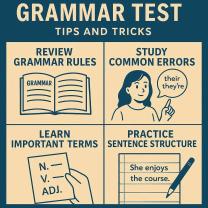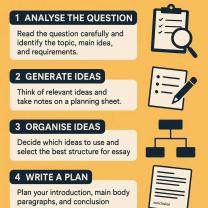What exactly is language arts?
Language arts, often referred to as English language arts (ELA) or simply "language arts," is a broad and interdisciplinary field of study that encompasses various aspects of the English language and its use in communication, including reading, writing, speaking, listening, and language skills. It is an essential subject area in education that focuses on developing students' proficiency in using language effectively for both practical and expressive purposes. Here are some key components and aspects of language arts:
Reading: Reading is a fundamental aspect of language arts. It involves the ability to decode written text, comprehend its meaning, and critically analyze and interpret various types of written material, including literature, informational texts, and digital media.
Writing: Writing skills encompass the ability to compose clear, coherent, and expressive written communication. This includes writing essays, stories, reports, research papers, poetry, and various forms of creative and academic writing.
Grammar and Language Mechanics: Language arts also covers the study of grammar, syntax, and language mechanics. Students learn about sentence structure, punctuation, capitalization, verb tense, and other language rules to enhance their writing and communication skills.
Vocabulary and Word Usage: Expanding one's vocabulary and understanding how to choose the right words for different contexts is an important part of language arts. This includes building a rich and varied vocabulary, understanding word meanings, and using words effectively in writing and speaking.
Oral Communication: Effective oral communication skills involve speaking clearly, listening attentively, and engaging in meaningful conversations. This includes public speaking, discussion, debate, and interpersonal communication.
Literature: The study of literature is a significant component of language arts. Students analyze and appreciate literary works, including novels, short stories, poetry, drama, and non-fiction texts. They explore themes, literary techniques, and the historical and cultural contexts of literary works.
Critical Thinking and Analysis: Language arts encourages critical thinking and analytical skills. Students learn to evaluate information, arguments, and different perspectives, both in their own writing and in the texts they read.
Research Skills: Research skills are important for conducting inquiries and investigations. Students learn how to find, evaluate, and cite sources, as well as how to conduct research for academic and informational purposes.
Media Literacy: In today's digital age, language arts also encompasses media literacy. Students learn to critically assess and analyze various forms of media, including digital texts, advertisements, news, and multimedia presentations.
Creative Expression: Language arts fosters creative expression through writing, poetry, storytelling, and other forms of artistic communication. Creative writing allows individuals to express themselves and explore their imagination.
Overall, language arts plays a crucial role in developing essential communication skills and literacy in individuals, enabling them to navigate the complexities of written and spoken language effectively in academic, professional, and personal contexts. It is a foundational discipline in education that promotes lifelong learning and the appreciation of language and literature.
Unpacking Language Arts: What Exactly Is It?
Language arts is a broad term that encompasses the study of language and its use in communication. It includes the following skills:
- Reading
- Writing
- Speaking
- Listening
- Viewing
- Visual representation
Language arts are essential for success in school and in life. They help us to communicate our thoughts and ideas clearly and effectively. They also help us to understand the world around us and to connect with others.
The Scope of Language Arts Education: A Comprehensive Overview
Language arts education typically begins in kindergarten and continues through high school. In the early grades, students focus on developing basic literacy skills such as reading and writing. As they progress through school, they learn more advanced language arts skills such as critical thinking, analysis, and synthesis.
Language arts education also includes exposure to a variety of literature, including fiction, non-fiction, poetry, and drama. Students learn to appreciate the beauty and power of language, and to develop their own unique voices as writers.
Language Arts Skills and Components
The six components of language arts are:
- Reading: Reading is the process of decoding and understanding written text. It is a complex skill that involves a number of cognitive processes, including decoding, comprehension, and fluency.
- Writing: Writing is the process of communicating ideas in written form. It involves a number of skills, including planning, drafting, revising, and editing.
- Speaking: Speaking is the process of communicating ideas orally. It involves a number of skills, including articulation, pronunciation, and fluency.
- Listening: Listening is the process of receiving and understanding spoken language. It involves a number of skills, including focusing, attending, and responding.
- Viewing: Viewing is the process of understanding visual information such as images, videos, and graphs. It involves a number of skills, including identifying, interpreting, and evaluating visual information.
- Visual representation: Visual representation is the process of communicating ideas using visual information such as images, diagrams, and charts. It involves a number of skills, including creating, interpreting, and evaluating visual information.
Language arts skills are essential for success in all areas of life. They help us to communicate effectively, to understand the world around us, and to learn new things.
Conclusion
Language arts is a broad and essential subject that helps us to communicate effectively, to understand the world around us, and to learn new things. Language arts education is important for students of all ages, and it helps them to develop the skills they need to be successful in school and in life.












